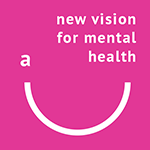Kristin Hohenadel reports for Slate Magazine:
“What would a psychiatric ward look like if patients designed it?
That is the question behind “Madlove: A Designer Asylum” from British artist and activist James Leadbitter (aka “the vacuum cleaner”). Leadbitter—whose work has been exhibited at venues including the Tate Modern and Chicago’s Museum of Contemporary Art—has endured stays in many public hospital psychiatric wards during his long struggle with mental illness.
Convinced that psychiatric wards’ bland, bad design directly affects patients like himself, Leadbitter and collaborator Hannah Hull spent months conducting workshops around the U.K. to crowdsource ideas from more than 300 patients, psychiatrists, architects, and designers on how to build visually appealing, patient-centered spaces in place of grim and institutional settings. Leadbitter told me in an email that the feedback was wide-ranging, including one memorable comment from a young man in Birmingham, England, who said: ‘All I want is a room with Fabergé eggs and a hammer’.
Earlier this month [March 2015], a beta version of “Madlove” opened at the Foundation for Art and Creative Technology in Liverpool, England, where it will remain until May 17 [2015] as a testing ground for the concept. Created with support from the Wellcome Trust in collaboration with the British Psychological Society, the space was developed with assistance from architectural designer James Christian and Benjamin Koslowski, a designer and Ph.D. researcher at London’s Royal College of Art. Leadbitter called it ‘a playful and exciting space for redesigning madness, a utopian attempt at what a mental health hospital could be like’ …”
You can read more from here.



